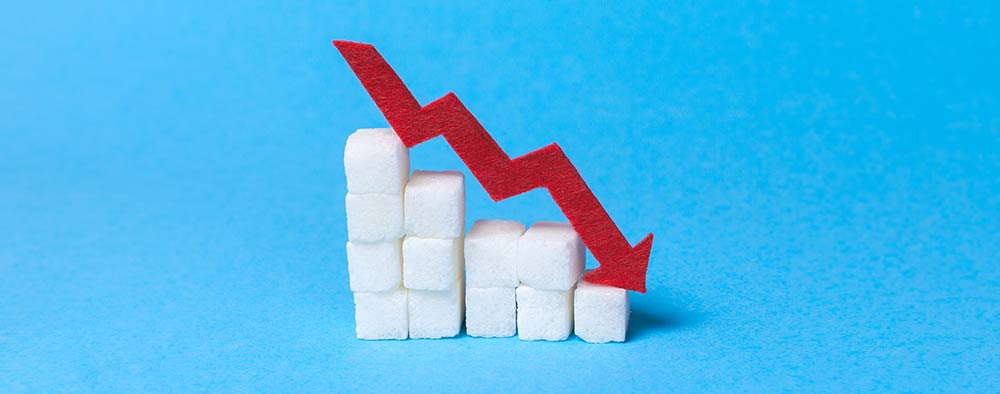by Brent Hearn •
If you’re one of the umpteen-zillion people who have at one point or another tried to shed some weight (don’t quote us on that number), you may have learned a couple of things:
- It can be very hard.
- It can be even harder to keep it off.
We’ve talked about this before in our article Baby Steps for Lasting Change. But in this article, we’d like to focus on one specific tactic that may help you achieve your weight loss goals. But first, a few caveats…
First, there’s more to being healthy than just losing weight, so make sure you have the right goals. Talk to your doctor and/or a nutritionist to help you make solid choices about the target you need to be aiming for in the first place.
Second, your mileage may vary when it comes to these tips. So many variables can come into play, including your age, genetics, activity level, and any pre-existing physical limitations and/or medical conditions.
Third, weight loss is an ever-evolving discussion among researchers and medical professionals. Some studies are contradictory to others, and it can be difficult to make informed decisions. (This is yet another reason to consult a professional to help you make those decisions.)
Regulate That Blood Sugar!
And now to the topic at hand: your blood sugar. Keeping an eye on blood sugar levels isn’t just for those who are diabetic. Stable blood sugar levels help to keep you more energized and feel less hungry—and less prone to the types of cravings that can lead to overeating.
Eating a diet that relies on complex carbohydrates, protein, and healthy fats can help to regulate your blood sugar. (That’s right: “carbohydrate”—or just “carb” for short—is not a dirty word.)
That said, it’s important to distinguish between complex carbs and simple carbs. Fiber and starch are complex carbs; they’re digested more slowly and release glucose into your bloodstream at a more gradual rate. (This is the whole “stable blood sugar” thing we’re going for, remember?)
Simple carbs, on the other hand, are digested more quickly and tend to be the culprits behind the blood sugar spikes and drops we want to avoid. Those ups and downs lend themselves to insulin resistance, which can cause a whole host of problems, including weight gain, higher triglyceride levels, hardening of the arteries (atherosclerosis), and hypertension (high blood pressure).
Simple carbs include table sugar, corn syrup, high-fructose corn syrup, and fruit concentrates. Some occur naturally, but many are added to sweeten foods you buy off the shelf: sodas, sugary breakfast cereals, and baked goods, just to name a few. You may have heard it’s good to reduce your intake of highly processed foods; one of the reasons is that they’re often chock-full of simple carbs.
Embrace Complexity
So, at this point, you’re probably saying something like, “You’re right! I’m a complex person who deserves complex carbs!” (Okay, you’re probably not saying anything remotely like that, but it has a nice ring to it, doesn’t it?)
We hear you. If you’re looking to include more complex carbohydrates in your diet, look for whole grains (such as quinoa and buckwheat), fiber-rich fruits (think apples, berries, and bananas), fiber-rich vegetables (include broccoli, kale, and carrots), beans, and lentils.
For a list of more foods—including complex carbohydrates— that can help to regulate your blood sugar, check out 17 Foods To Lower Your Blood Sugar.
Sources:
Cleveland Clinic: Insulin Resistance
Healthline: 17 Foods To Lower Your Blood Sugar
Healthline: Simple Carbohydrates vs. Complex Carbohydrates
Women’s Health: Keeping Your Blood Sugar in Check Comes with a Bonus Prize: Weight Loss









 ▶︎
▶︎  Why is the Discount Challenge prize amount $15,024? Because that is the average “per-occurrence” fine for Medicare inducements. That’s not $15,024 per patient, that’s not per provider, that’s PER VISIT. Stinks, doesn’t it? To us, the prize amount is worth the investment if we can help our profession better understand proper discounting.
Why is the Discount Challenge prize amount $15,024? Because that is the average “per-occurrence” fine for Medicare inducements. That’s not $15,024 per patient, that’s not per provider, that’s PER VISIT. Stinks, doesn’t it? To us, the prize amount is worth the investment if we can help our profession better understand proper discounting.